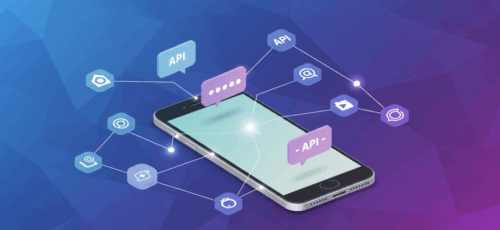Programmable voice APIs are changing how businesses communicate by embedding intelligent voice capabilities directly into software applications.
- SIP trunking integration is driving businesses to invest in voice-powered solutions
- Real-time capabilities with optimized network routing are enabling seamless cloud-based communications
- Industry adoption spans healthcare, finance, and logistics, with measurable ROI improvements
- Developer-friendly tools are making enterprise-grade voice features accessible through simple API calls
Traditional phone systems and rigid telephony infrastructure are giving way to something far more powerful and flexible for B2B communications.
B2B communication is experiencing a seismic shift. At the heart of this transformation lies a technology that’s quietly revolutionizing how businesses connect, collaborate, and serve their customers: the programmable voice API.
According to Gartner, 92% of organizations plan to invest in software solutions with advanced communication capabilities, and voice-enabled applications are leading the charge. Developers gain control of creating custom voice applications that adapt to specific organizational needs.
Voice APIs for developers break down the barriers between software applications and real-time voice communication, enabling solutions that were previously impossible or prohibitively complex.
What Makes Modern Programmable Voice APIs Revolutionary?
Programmable voice APIs allow developers to integrate voice calling capabilities directly into applications using standard HTTP requests and familiar programming languages. Instead of relying on separate phone systems or complex telecom hardware, businesses can now embed voice functionality wherever it makes sense in their digital workflows.
Modern API platforms offer sophisticated features that rival enterprise-grade phone systems while maintaining the flexibility and scalability that cloud-native applications demand. The WebRTC API market has expanded by 26% in just one year, reflecting the rapid evolution of browser-based voice capabilities.
This growth signals a maturation of voice-first development practices. Developers can implement advanced voice features like real-time call analytics, intelligent call routing, and automated transcription with the same ease as adding a search bar to a website.
SIP Trunking: The Foundation of Modern Voice APIs
Perhaps the most revolutionary aspect of programmable voice APIs is their integration with Session Initiation Protocol (SIP) trunking technology. SIP trunking APIs provide the reliable, scalable foundation that allows businesses to replace traditional phone lines with cloud-based voice services while maintaining enterprise-grade quality and reliability.
Unlike traditional telephony systems that require physical infrastructure and rigid capacity planning, SIP-based voice APIs offer dynamic scaling that adapts to demand in real time. This flexibility allows businesses to handle traffic spikes without investing in additional hardware while only paying for actual usage rather than fixed line capacity.
Modern SIP implementations also provide advanced features like automated failover, dynamic call routing based on business rules, and detailed analytics for performance optimization. Integration with existing systems enables click-to-call functionality and automatic call logging, while robust authentication mechanisms ensure security and prevent unauthorized access.
Real-Time Performance Revolution
Latency has always been the enemy of effective voice communication. Modern voice APIs have tackled this challenge head-on, with leading platforms now offering optimized network routing that rivals traditional telephony systems. This performance leap enables new use cases that weren’t feasible before, from instant call connections to seamless multi-party conferencing.
By leveraging geographically distributed servers and smart traffic management, these APIs can deliver consistently high-quality voice experiences regardless of user location or network conditions.
What Real-World B2B Use Cases Are Transforming Industries?
The true measure of any technology’s potential lies in its practical applications. Voice APIs for developers are already transforming how organizations operate across multiple industries, delivering measurable improvements in efficiency, customer satisfaction, and cost reduction.
Healthcare: Streamlining Patient Communication
Healthcare organizations can leverage programmable voice APIs to create more accessible and efficient patient experiences. Modern implementations allow healthcare systems to embed voice capabilities directly into patient portals and scheduling systems, eliminating the need for separate phone applications.
These integrations enable automated appointment reminders through voice calls, reducing no-show rates and improving patient engagement. Healthcare providers can implement voice-enabled systems that allow patients to confirm appointments, reschedule visits, or access basic information through simple voice interactions, all while maintaining HIPAA compliance through secure API implementations.
Emergency response systems benefit from programmable communications that can automatically initiate calls when specific conditions are met, ensuring critical interactions reach the appropriate personnel quickly and reliably.
Finance: Enhancing Security and Service
Financial institutions are discovering that voice APIs offer unique advantages for both security and customer service. Voice-based authentication can provide an additional security layer beyond traditional password systems, while automated call systems can handle routine inquiries and transactions.
Customer service applications in finance can automatically verify caller identity through voice APIs integrated with customer databases, streamlining the authentication process while maintaining security standards. Automated systems can handle common requests like balance inquiries or transaction history, freeing human agents to focus on more complex customer needs.
Compliance teams can use voice API features to automatically record and store customer interactions according to regulatory requirements, with built-in retention policies and secure storage options that meet industry standards.
Logistics: Coordinating Complex Operations
The need for real-time coordination across complex supply chains has driven the logistics industry’s adoption of programmable voice APIs. Voice-enabled systems allow drivers to receive updates and report status changes through hands-free interfaces, improving safety while maintaining operational efficiency.
Warehouse operations can implement voice-directed systems that provide workers with hands-free instructions for picking, packing, and inventory management. Integration with warehouse management systems enables real-time updates and automatic notifications.
Customer-facing applications include automated delivery notifications with interactive voice capabilities, allowing recipients to reschedule deliveries, provide access instructions, or request status updates through simple voice interactions.
What Key Features Are Driving This Communication Revolution?
Understanding the specific capabilities that make programmable voice APIs revolutionary helps explain why developers and businesses are embracing this technology so rapidly. These features represent fundamental improvements over traditional telephony systems while opening entirely new possibilities for voice-enabled applications.
Advanced SIP Trunking Capabilities
Modern SIP implementations offer dynamic scaling that automatically adjusts capacity based on demand, eliminating the need for capacity planning and reducing costs.
Advanced SIP features include intelligent call routing based on business rules, time-based routing for different operational schedules, and geographic routing that connects callers to the most appropriate location. Quality monitoring systems can detect audio issues and automatically switch to alternative routing paths, ensuring consistent call quality.
Integration capabilities allow SIP trunking APIs to work seamlessly with existing business systems, enabling features like screen-pop functionality in CRM systems, automatic call logging, and real-time presence information for better call handling.
WebRTC Integration for Browser-Based Communication
WebRTC technology enables high-quality voice communication directly through web browsers without requiring plugins or additional software. The WebRTC market is projected to grow from $7.03 billion to $94.07 billion by 2032, reflecting the technology’s growing importance in business communication.
This browser-native approach eliminates many traditional barriers to voice application deployment. Users can access voice features instantly through web links, while developers can implement voice capabilities using familiar web technologies. Advanced WebRTC implementations support features like screen sharing, multi-party conferencing, and real-time collaboration tools, all integrated seamlessly with programmable communications.
Intelligent Call Analytics and Insights
Data-driven decision making has become essential for modern businesses, and programmable voice APIs deliver unprecedented visibility into communication patterns and performance metrics. Real-time analytics provide insights into call volume, duration, quality metrics, and system performance.
Advanced implementations include predictive analytics that can forecast call volumes and automatically adjust resources accordingly. Quality monitoring systems provide detailed metrics on call quality, connection reliability, and user satisfaction, enabling continuous optimization of voice services.
Call detail records (CDRs) provide comprehensive information about every call, including routing paths, quality metrics, and cost information, allowing businesses to optimize their communication strategies and manage costs effectively.
Multi-Channel Communication Integration
Modern businesses require seamless integration across multiple communication channels, and voice APIs for developers excel at creating unified experiences. Voice capabilities can be integrated with chat systems, email platforms, video conferencing, and collaboration tools to create comprehensive programmable communications solutions.
This integration extends to customer data management, where voice interactions can automatically update customer records and trigger appropriate follow-up actions. Advanced implementations can seamlessly transition conversations between channels while maintaining context and history, ensuring customers never have to repeat information.
How Does the Competitive Landscape Shape Developer Choices?
The programmable voice API market has matured significantly, with several established players offering distinct approaches to voice integration. Understanding the competitive landscape helps developers make informed decisions about which platform best serves their specific needs and long-term objectives.
Twilio: The Comprehensive Platform
Twilio has established itself as a comprehensive communications platform capable of handling large-scale voice implementations. The platform offers detailed documentation and a wide range of features that can accommodate complex voice application requirements. Twilio’s strength lies in its proven ability to scale from small applications to enterprise deployments handling significant call volumes.
However, this comprehensive approach can sometimes present challenges for developers who need straightforward voice integration without extensive complexity. Additionally, Twilio’s pricing structure can become substantial as usage scales, particularly for businesses with high call volumes or complex feature requirements.
SignalWire: Performance-Focused Innovation
SignalWire focuses on performance optimization and advanced technical capabilities. Their platform emphasizes cutting-edge features and optimized performance metrics, making them attractive for applications requiring specific technical requirements or advanced customization options.
SignalWire’s technical focus provides powerful capabilities but may require more specialized knowledge to implement. Developers may find the initial setup more involved compared to platforms designed for simpler integration paths.
Flowroute: Balancing Power with Simplicity
The most successful voice API implementations often come from platforms that balance powerful capabilities with straightforward integration. Flowroute exemplifies this approach by offering enterprise-grade features through developer-friendly APIs that prioritize ease of use without sacrificing functionality.
What distinguishes Flowroute is its focus on practical developer needs. The platform provides comprehensive SIP trunking capabilities, reliable voice services, and intelligent features while maintaining straightforward implementation paths that don’t require extensive telecommunications expertise. Developers can implement voice functionality quickly, then gradually add sophisticated features like automated routing and real-time analytics as their applications evolve.
Flowroute offers transparent pay-as-you-use models that scale naturally with actual usage rather than forcing developers into complex contract structures. The platform’s proprietary HyperNetwork technology provides enterprise-level redundancy and reliability, ensuring that mission-critical voice applications maintain consistent performance even during carrier outages.
The platform’s documentation and developer resources are designed to accelerate implementation rather than overwhelming users with unnecessary complexity. This philosophy extends to customer support, where developers work directly with knowledgeable engineers who understand both the technical and business aspects of voice APIs for developers.
How Should You Choose the Right Voice API for Your B2B Needs?
Selecting a programmable voice API platform requires careful consideration of both current requirements and future growth plans. The decision impacts immediate development timelines, long-term scalability, maintenance requirements, and total cost of ownership.
Integration Complexity Assessment
The complexity of integrating voice capabilities varies between platforms. Developers should evaluate how easily the API fits into their current technology stack and development workflow. Look for platforms that offer SDKs in your preferred programming languages and provide comprehensive documentation with practical examples.
Consider the level of customization required for your specific use case. Some applications need simple click-to-call functionality, while others require complex call routing logic or advanced analytics.
Scalability Requirements
Voice applications often experience unpredictable usage patterns, making scalability a critical consideration. Evaluate how each platform handles traffic spikes, what limitations exist on concurrent calls, and how pricing scales with increased usage. The best platforms offer automatic scaling without requiring manual intervention or infrastructure management.
Consider both technical scalability and business scalability. As your organization grows, you may need additional features or integration capabilities. Choose platforms that can evolve with your business rather than forcing future migrations to more capable solutions.
Reliability and Uptime Considerations
Voice communication demands exceptional reliability, as outages directly impact customer experience and business operations. Look for platforms that offer strong uptime guarantees backed by redundant infrastructure and automatic failover capabilities. Consider the provider’s track record and the transparency of their status reporting.
Evaluate the platform’s approach to quality monitoring and issue resolution. The best providers offer real-time quality metrics, proactive monitoring, and rapid response to any service degradation. They should also provide tools that help you implement your own redundancy and failover strategies.
Cost Structure Analysis
Voice API pricing models vary between providers, and the most attractive initial pricing may not represent the best long-term value. Evaluate the total cost of ownership, including per-minute charges, monthly fees, feature costs, and any potential additional charges for advanced capabilities.
Consider how pricing scales with your expected usage patterns. Some platforms offer volume discounts that make them more attractive at higher usage levels, while others provide better value for smaller deployments. Factor in the cost of development time, as platforms with simpler integration may offer better overall ROI despite higher per-minute costs.
How Can You Get Started with Voice API Integration?
Successful voice API integration balances immediate needs with long-term objectives. Deployments start with clear goals, careful platform selection, and a phased implementation strategy that allows for learning and optimization.
Development Considerations
Before beginning implementation, clearly define your voice application’s requirements and success metrics. Consider factors like expected call volumes, required features, integration points with existing systems, and user experience objectives.
Pay attention to the development tools and resources provided by potential platforms. Look for comprehensive documentation, code examples in your preferred programming languages, and active developer communities that can provide support and guidance. The quality of these resources often determines how quickly you can achieve a working implementation.
Best Practices for B2B Implementation
Successful B2B voice implementations typically follow several common patterns. Start with a minimum viable product that demonstrates core functionality, then gradually add advanced features based on user feedback and business requirements.
Consider the user experience, particularly for applications that will be used by customers or external partners. Voice interfaces should be intuitive and reliable, with clear audio quality and helpful error handling. Test extensively across different devices, network conditions, and use cases to ensure reliable performance in real-world scenarios.
Focus on security and compliance requirements early in the development process. Voice applications often handle sensitive information, and regulatory requirements may dictate specific security measures or data handling practices. Understanding these requirements upfront prevents costly redesigns later in the development process.
Frequently Asked Questions
What’s the difference between programmable voice APIs and traditional PBX systems? Programmable voice APIs offer cloud-based flexibility and can be integrated directly into applications, while traditional PBX systems require dedicated hardware and separate phone systems. APIs provide better scalability, easier integration with modern software, and typically lower total cost of ownership.
How quickly can developers implement voice features using these APIs? With modern programmable voice APIs, developers can often implement basic voice functionality in hours or days rather than weeks or months. The exact timeline depends on application complexity and required features, but simple click-to-call functionality can often be added with just a few lines of code.
What security considerations should businesses evaluate when implementing voice APIs? Key security considerations include data encryption for voice traffic, secure authentication mechanisms, compliance with industry regulations (HIPAA, PCI, etc.), and protection against toll fraud. Choose platforms that offer enterprise-grade security features and regular security audits.
Can programmable voice APIs integrate with existing business applications? Yes, most modern voice APIs are designed for easy integration with existing business applications. They typically offer REST APIs, SDKs for popular programming languages, and webhooks for real-time event handling, making integration straightforward for most development teams.
How do costs compare between voice APIs and traditional phone systems? Voice APIs typically offer more predictable and scalable pricing models, with pay-as-you-use structures that can be more cost-effective than traditional phone systems. However, total costs depend on usage patterns, required features, and existing infrastructure investments.
Add Flexible Voice Capabilities to Your Business Apps
Programmable voice APIs are transforming how businesses connect with customers, collaborate internally, and operate efficiently. For developers and IT leaders, understanding and leveraging programmable communications has become essential for staying competitive and meeting evolving user expectations.
Flowroute provides developers with the tools and reliability needed to build exceptional voice applications. Get started today and discover how simple it can be to add enterprise-grade voice capabilities to your applications.

Mitch leads the Sales team at BCM One, overseeing revenue growth through cloud voice services across brands like SIPTRUNK, SIP.US, and Flowroute. With a focus on partner enablement and customer success, he helps businesses identify the right communication solutions within BCM One’s extensive portfolio. Mitch brings years of experience in channel sales and cloud-based telecom to every conversation.






